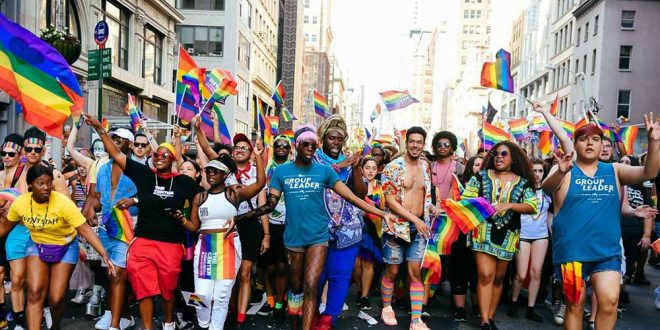Gender is a primary category in which individuals both identify themselves and are identified by others. Gender is not a set of binary categpries, but rather a spectrum. The concept of gender can be restrictive in many ways. People are generally expected to identify as a particular gender, the one which has been assigned to them, and act in specific ways deemed accordingly. While gender roles are the expectations a culture has of one’s behavior as appropriate for male or female, gender identity is, the individual’s actual subjective sense of belonging to the female or male category or neither of the two.
Some people discover that their gender identity does not match the gender role they have been assigned, a condition traditionally referred to as gender dysphoria. In other circumstances, children may be born with both sets of genitalia, a condition referred to as being intersexed.
However, bipolar definitions of gender with the assumption of them matching one’s biological sex can create an either/or situation in which people fail to see the existence of an in between. There are severe ramifications. People who do not identify as the gender they have been assigned face the threat of violence, actual physical attacks, verbal assaults, in the worst cases murder, and at the very least mockery and scrutiny.
Interpretations of Gender Identity and Sexual Orientation
Various research and theoretical writing from people such as Kate Bornstein and John Money have examined the notion that gender is a fluid category with room for movement. (Crooks and Baur1998 and Bornstein, 1994) Bipolar definitions, for the most part, require that the gender roles for both men and women involve heterosexuality. This is not always the case. Gay men and lesbian women continue to define themselves as men and women while maintaining primary interest in people of the same gender. There is a conceptual middle ground, almost a crossing between the continuum of gender and sexuality. The existence of people who openly cross this line is certain. Gender identity theories are complex and explanations range from those rooted in psychological, sociological, and biological interpretations, to the personal anecdotes of those whose life experiences have led them to examine the concept of gender. Gender Assignment
Sex is generally referred to as the biological category involving the existence of certain genitalia and reproductive capabilities. Many times people attribute the word “natural” or “normal” to that which exists biologically. Gender is a category which currently maintains two supposed distinct and opposing components. The truth is that many variations in sex exist on a purely biological level. For example, turner’s syndrome involves the existence of female reproductive internal and external structures (Crooks and Baur 1998). Most people with this identify as female however they do not develop breasts nor are they fertile. Klinefelter’s syndrome involves the development of small testes, male reproductive internal structures but also may result in feminization of secondary sex characteristics such as breast development and rounded body contours(Crooks and Baur, 1998). People with Klinefelter’s vary in their gender identity. Androgen insensitivity syndrome involves a lack of set of either male of female internal structures (Crooks and Baur 1998). Puberty may result in breast development but menstruation does not occur. Although they have XY chromosomes, these people mainly identify as female. Several other examples of “natural,” biological contradictions to the binary definitions of sex exist. Suzanne Kessler discussed several problems in choosing the gender of “intersexed infants…babies born with genitals that are neither male nor female.” (Kessler, 1990 ) She notes that the ground on which the determination of a biological male or female is made are socially rooted in “…such cultural factors as the ‘correct’ length of the penis and the capacity of the vagina.” (Kessler, 1990) This sex assignment by persons other than the individual him/herself can cause conflict later in life. If one thing is clear, it is the idea that whatever the root of an individual’s gender identity, it should be a personal decision.
It is important, therefore, to remember that gender identity could have biological roots, but it does not necessarily have to. Many people maintain a gender identity which opposes the gender role they are assigned without having a biologically identifiable root to their gender identity. Gender is a fluid category involving a spectrum of attributes which contribute to gender identity. In the biological respect, there are examples of chromosomal and hormonal combinations in which an individual cannot strictly be deemed a man or woman. In this respect, there are as many sexes as there are humans. On the psychological and social level, several people do not feel that they fit in with other people of the same gender as themselves- they do not feel a part of the gender that they have been assigned without any identifiable biological (hormonal, chromosomal) distinctions between themselves and other people of the same gender. Gender and sex do not necessarily coincide, nor do gender assignment and gender identity. Often times the concepts of gender identity, gender role, and sexual orientation become mixed. But, each is separate and not necessarily a determinant of the next.
Transgender People
The notion of a gender continuum becomes a reality by examining the existence transgender people. The broadest definition of people who identify as transgender includes “anyone who bends or challenges traditional gender roles” (Youth Resource Library). Transgender people contest gender norms “by wearing clothing not generally associated with their own sex and in some cases by modifying their bodies to be more like those of the other sex”(Youth Resource Library). This definition encompasses a large number of people including: intersexed people, transvestites, drag queens/kings, transexuals, and androgynes.
Intersexed people, as mentioned before, are born with genitals “which show characteristics of both sexes” (Youth Resource Library). Transvestites or crossdressers wear clothing traditionally worn by the other gender on occasion, but do not have the desire to change their sex. It is estimated that the percentage of crossdressers in the heterosexual and homosexual communities is about equally at 10% (Crooks & Baur, 1998). This means that 90% of transvestites are heterosexual (Crooks & Baur, 1998). Drag queens/kings present exagerated images of men and women using stereotypes mainly for entertainment. Transexuals feel trapped in the body of the wrong sex. Many transexual people develop a sense of inconformity with their genital anatomy at a young age; some recall identifying strongly with characteristics of the other sex as early as five, six, or seven tears of age (Crooks & Baur 1998). Most transexual people lead heterosexual lifestyles and “…prefer to have sexual relations with a member of the other sex.” – meaning other than the gender they identify as (Crooks and Baur 1998). About 50% of those who have sex changes are female to male transexuals (FTM) (Crooks &Baur;, 1998). The other half are male to female (MTF) (Crooks & Baur, 1998). The number of people living as the gender other than the one they were assigned range from 50,000 to 75,000 and an estimated 25,000 Americans have sex-changing surgery (Brook, 1998). Androgynes or gender blenders “merge the characteristics of both sexes” (Crooks and Baur,1998).
Being transgender has no determinable correlation to being homosexual. Apart from sexuality, transgender people confront gender roles and act in opposition to them. Although they are distinct and unique, each of the above categories challenges gender roles.
The Impact of Gender Identity
The gender identity of an individual can have an incredible impact on his/her life experiences. For example an individual might maintain the gender identity which conflicts with the gender role s/he is assigned. In this case gender, one category generally perceived as simplistic and bipolar, becomes an area of extreme confusion and discontent. Aside from genitalia, which remains generally unexposed, society maintains certain expectation of what each gender should look, sound, and act like. Any deviation from these rigid models opens a person up to at the very least ridicule. Challenging gender roles is often the source of harrassment. Adolescence is a period of growth and development already filled with feelings of awkwardness. Understanding of these concepts open doors to a world of greater understanding and possibly even compassion. Presently, there is little space for those who do not fit within a specific set of gender definitions and regulations. There is a need to look beyond what we see or think we know about other people and start listening to what they know about themselves.
References
- Bornstein, K., Gender Outlaw: On Men, Women, and the Rest of Us. Vintage Books, 1994
- Brook, J., Sex Change Industry a Boon to Small City. New York Times November 8, 1998
- Crooks, R. & Baur, K., Our Sexuality: Seventh Edition. Brooks/ Cole Publishing Company, 1997
- Kessler, S., “The Medical Construction of Gender: Case Management of Intersexed Infants” in Signs. Division of Natural Sciences, State University of New York College at Purchase, 1990
- Stoltenberg, J., “How Men Have (a) Sex.” in Reconstructing Gender: A Multicultural Anthology. Mayfield Publishing Company, 1997
- Youth Resource Library Transgender: What is it? youthresource.com/library/trans.htm
youthresource.com/feat/trans/art_gen.htm – 2004
 Lesbian, Gay, Bisexual, Transgender & Intersex News Lesbian News, Gay News, Bisexual News, Transgender News, Intersex News, LGBTI News
Lesbian, Gay, Bisexual, Transgender & Intersex News Lesbian News, Gay News, Bisexual News, Transgender News, Intersex News, LGBTI News




